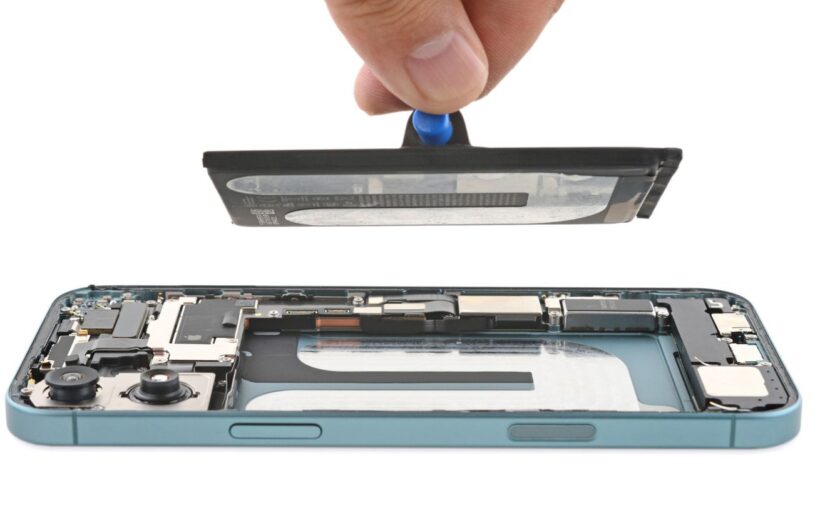
No sooner has the Phone 16 lineup arrived than the folks at iFixit start taking them apart, a process made easier this time around by the day-one release of repair manuals from Apple. The disassembly process shows the Camera control is a real button that moves, along with a flex cable that likely measures force, and the heat sink that appears positioned to keep the A18 chip’s Neural Engine cool while it handles AI workloads.
For this year’s refresh, the base iPhone 16 may be more interesting than the Pro model for one reason — it’s the first one using electrically debondable adhesive for its battery enclosure.
As reported in June by The Information, Apple isn’t using the new adhesive on all of its phones yet, but now we have a lot more information about how it works in real life. The process described in Apple’s repair documents matches the debonding-on-demand demo from adhesives giant Tesa.
:no_upscale():format(webp)/cdn.vox-cdn.com/uploads/chorus_asset/file/25510378/electrial_relase_psa_battery_mounting_11134808_195005897_ezgif.com_speed.gif)
After disconnecting the battery from the board, you apply electric current from a power source (a 9-volt battery for 90 seconds will do it), and the previously glued-in battery slips out easily enough that gravity alone can do the job. Then to make the adhesive stick for the new battery, it just needs pressure.
:format(webp)/cdn.vox-cdn.com/uploads/chorus_asset/file/25634422/iPhone_16_layout_1_1599x900.jpg)
Apple notes that over time, the time to release could get longer, but on these brand-new phones, iFixit found that using 20V current was enough to undo the bond in five seconds, and Apple says you can use up to 30V. iFixit also brought in some microscopic close-ups of the frame that holds the battery and the machined ridges it has to give the battery something to stick to.



